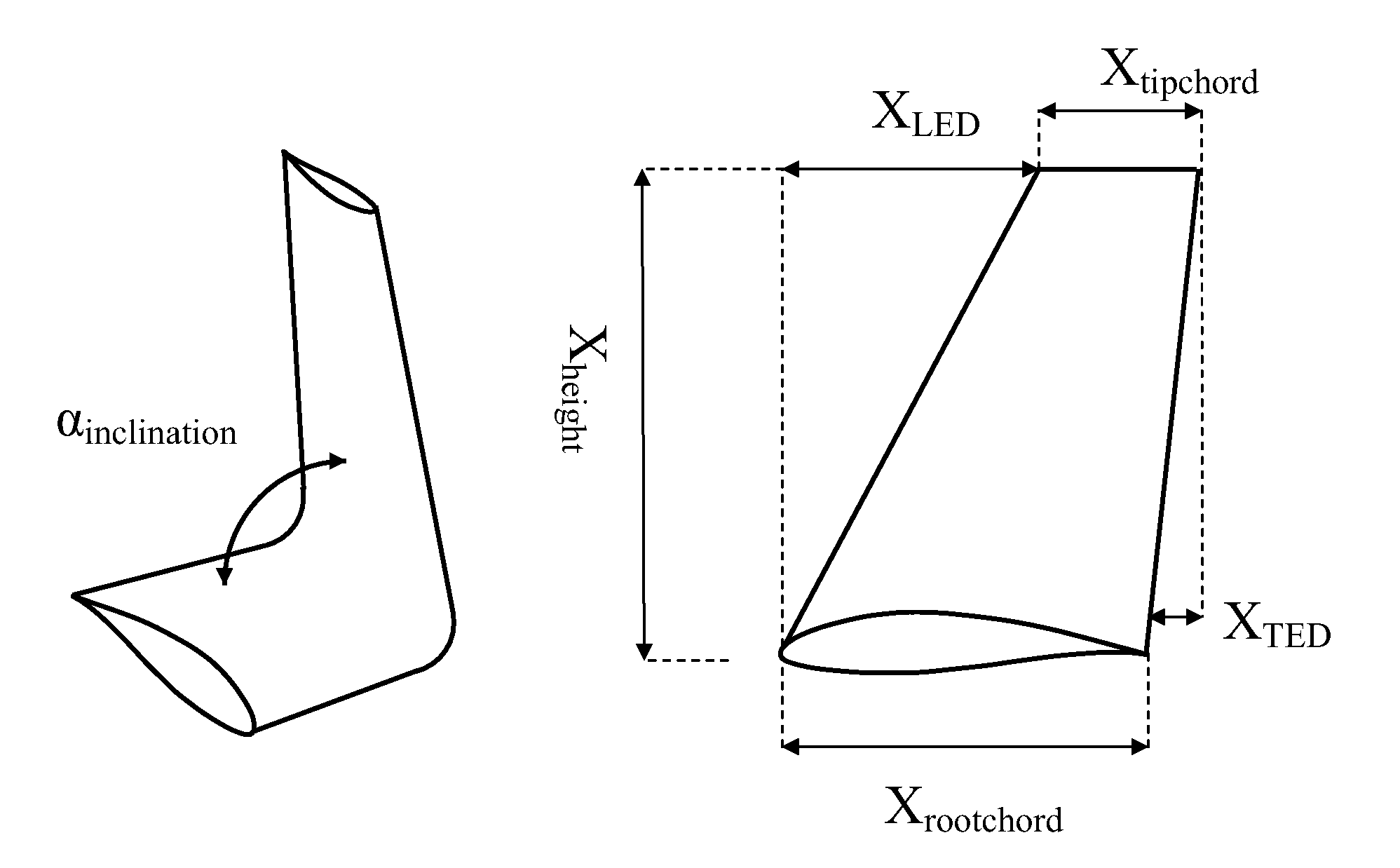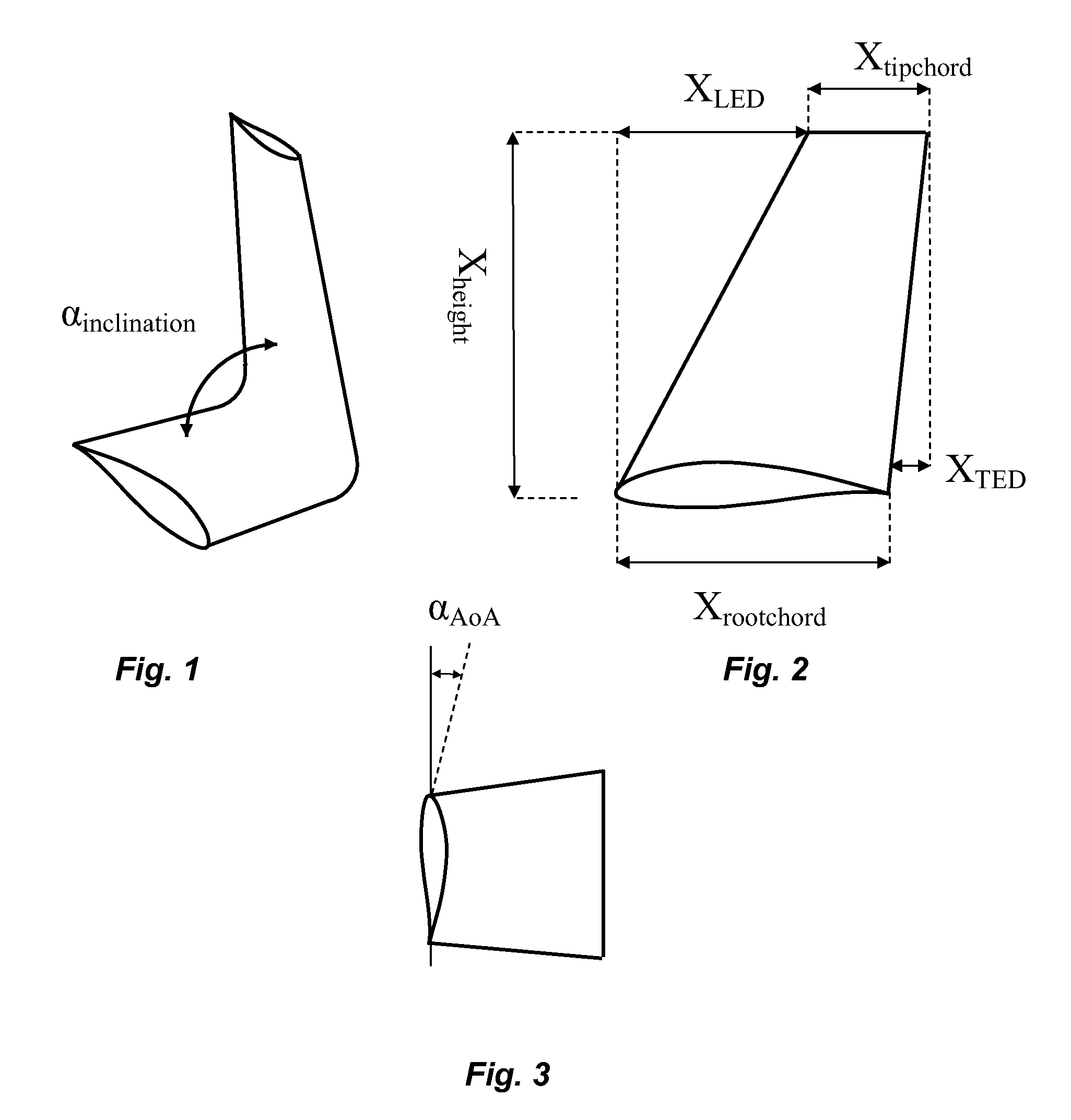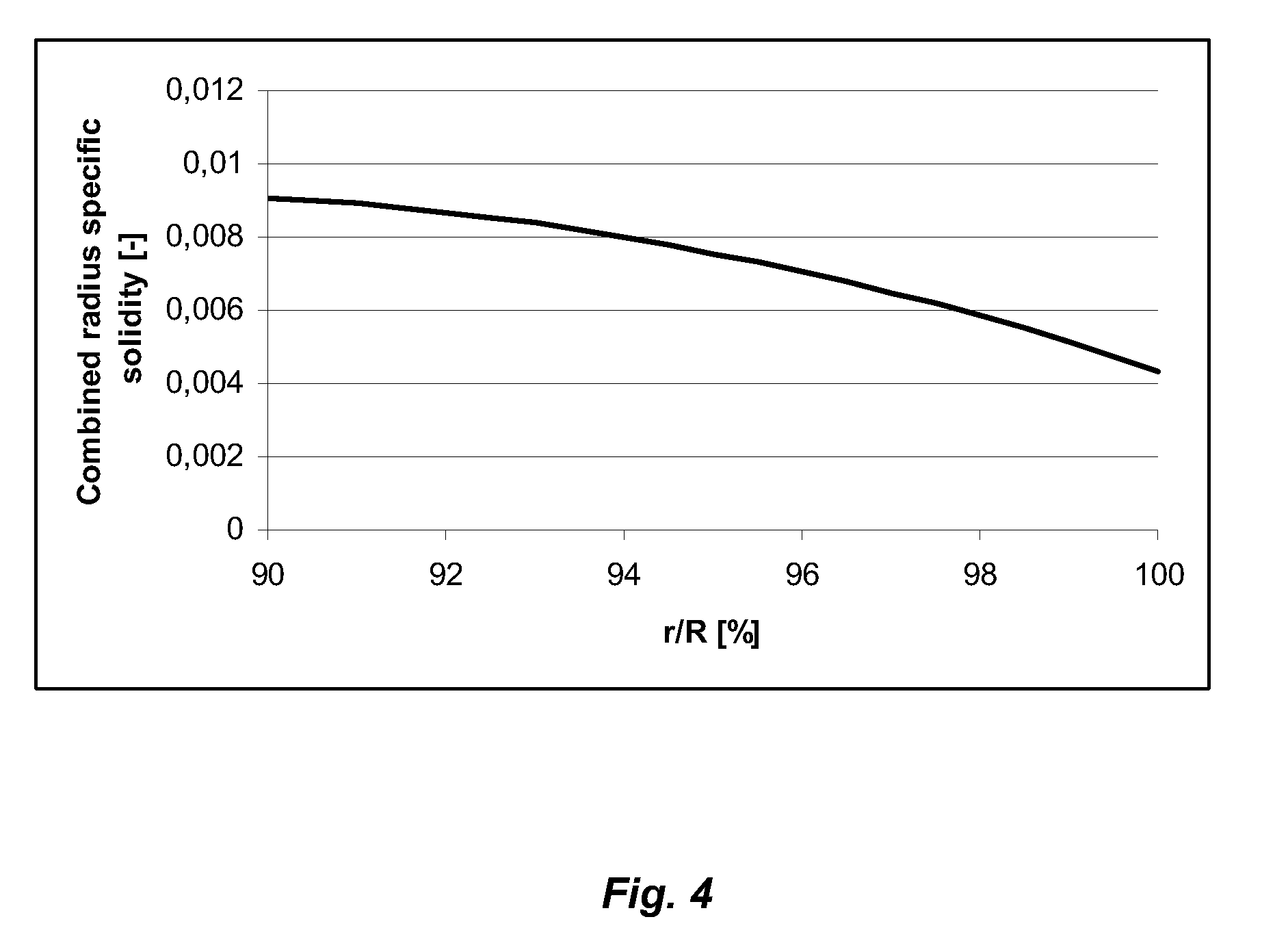Wind turbine with rotor blades equipped with winglets and blades for such rotor
a technology of wind turbines and rotor blades, which is applied in the direction of propellers, propulsive elements, water-acting propulsive elements, etc., can solve the problems of reducing the lift coefficient at the tip section of the wing, causing drag and aerodynamic noise, and causing the tip vortex to rise, so as to reduce the adverse tip effect on the lift coefficient, the effect of increasing the performance of the part and reducing the adverse tip
- Summary
- Abstract
- Description
- Claims
- Application Information
AI Technical Summary
Benefits of technology
Problems solved by technology
Method used
Image
Examples
Embodiment Construction
[0052]In FIG. 1, the tip end of a blade is shown as seen in perspective with the winglet pointing upwards, and the inclination of the winglet to the blade is shown as the winglet inclination angle to blade, αinclination, defined as the angle between the main wing centre line and the winglet centre line.
[0053]In FIG. 2 the tip end of a blade is shown as seen from the end thereof, i.e. the blade itself extends away from the viewer of FIG. 3. The winglet height, Xheight, is defined as the distance from the main wing chord line at the very tip to the chord line of the very tip of the winglet. The winglet root chord, Xrootchord, is defined as the distance from the leading edge to the trailing edge of the main wing at the very tip where the winglet is attached. The winglet tip chord, Xtipchord, is defined as the distance from the leading edge to the trailing edge of the winglet at the very tip of the winglet. The winglet leading edge displacement, XLED, is defined as the distance from the...
PUM
 Login to View More
Login to View More Abstract
Description
Claims
Application Information
 Login to View More
Login to View More - R&D
- Intellectual Property
- Life Sciences
- Materials
- Tech Scout
- Unparalleled Data Quality
- Higher Quality Content
- 60% Fewer Hallucinations
Browse by: Latest US Patents, China's latest patents, Technical Efficacy Thesaurus, Application Domain, Technology Topic, Popular Technical Reports.
© 2025 PatSnap. All rights reserved.Legal|Privacy policy|Modern Slavery Act Transparency Statement|Sitemap|About US| Contact US: help@patsnap.com



